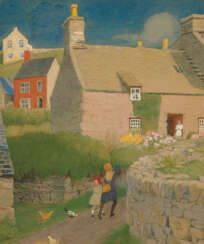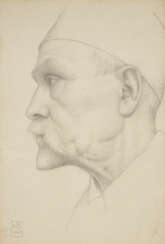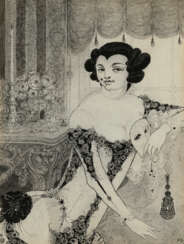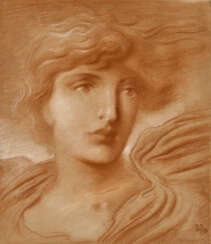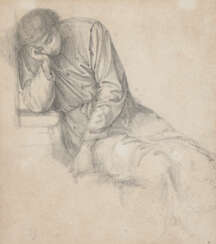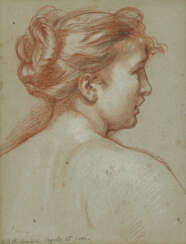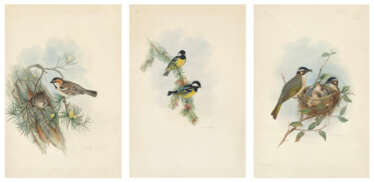
Drawings — British and European Art
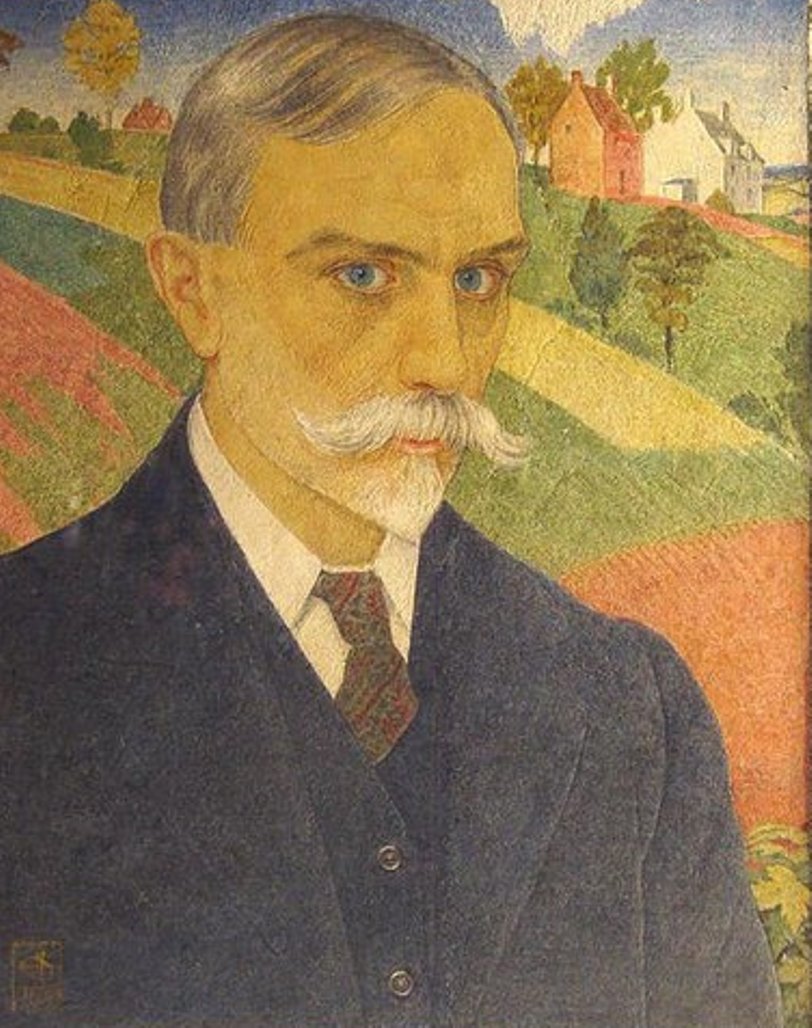
Joseph Edward Southall was a British painter and leader of the Birmingham Group of Craftsmen Artists.
At the age of 21, while traveling in France and Italy, Southall was fascinated by Italian Renaissance painters. He later created many large tempera paintings, mostly of mythological and religious subjects, which were exhibited throughout Europe as well as in the United States. The artist also painted landscapes and many portraits in watercolor and oil.
With the outbreak of World War I, Southall became more involved in the anti-war struggle, writing pamphlets and drawing cartoons for books and magazines. Along with other members of the Birmingham Group, Southall also practiced various crafts including murals, furniture decoration, lace, book illustration and prints.

Joseph Edward Southall was a British painter and leader of the Birmingham Group of Craftsmen Artists.
At the age of 21, while traveling in France and Italy, Southall was fascinated by Italian Renaissance painters. He later created many large tempera paintings, mostly of mythological and religious subjects, which were exhibited throughout Europe as well as in the United States. The artist also painted landscapes and many portraits in watercolor and oil.
With the outbreak of World War I, Southall became more involved in the anti-war struggle, writing pamphlets and drawing cartoons for books and magazines. Along with other members of the Birmingham Group, Southall also practiced various crafts including murals, furniture decoration, lace, book illustration and prints.

Joseph Edward Southall was a British painter and leader of the Birmingham Group of Craftsmen Artists.
At the age of 21, while traveling in France and Italy, Southall was fascinated by Italian Renaissance painters. He later created many large tempera paintings, mostly of mythological and religious subjects, which were exhibited throughout Europe as well as in the United States. The artist also painted landscapes and many portraits in watercolor and oil.
With the outbreak of World War I, Southall became more involved in the anti-war struggle, writing pamphlets and drawing cartoons for books and magazines. Along with other members of the Birmingham Group, Southall also practiced various crafts including murals, furniture decoration, lace, book illustration and prints.
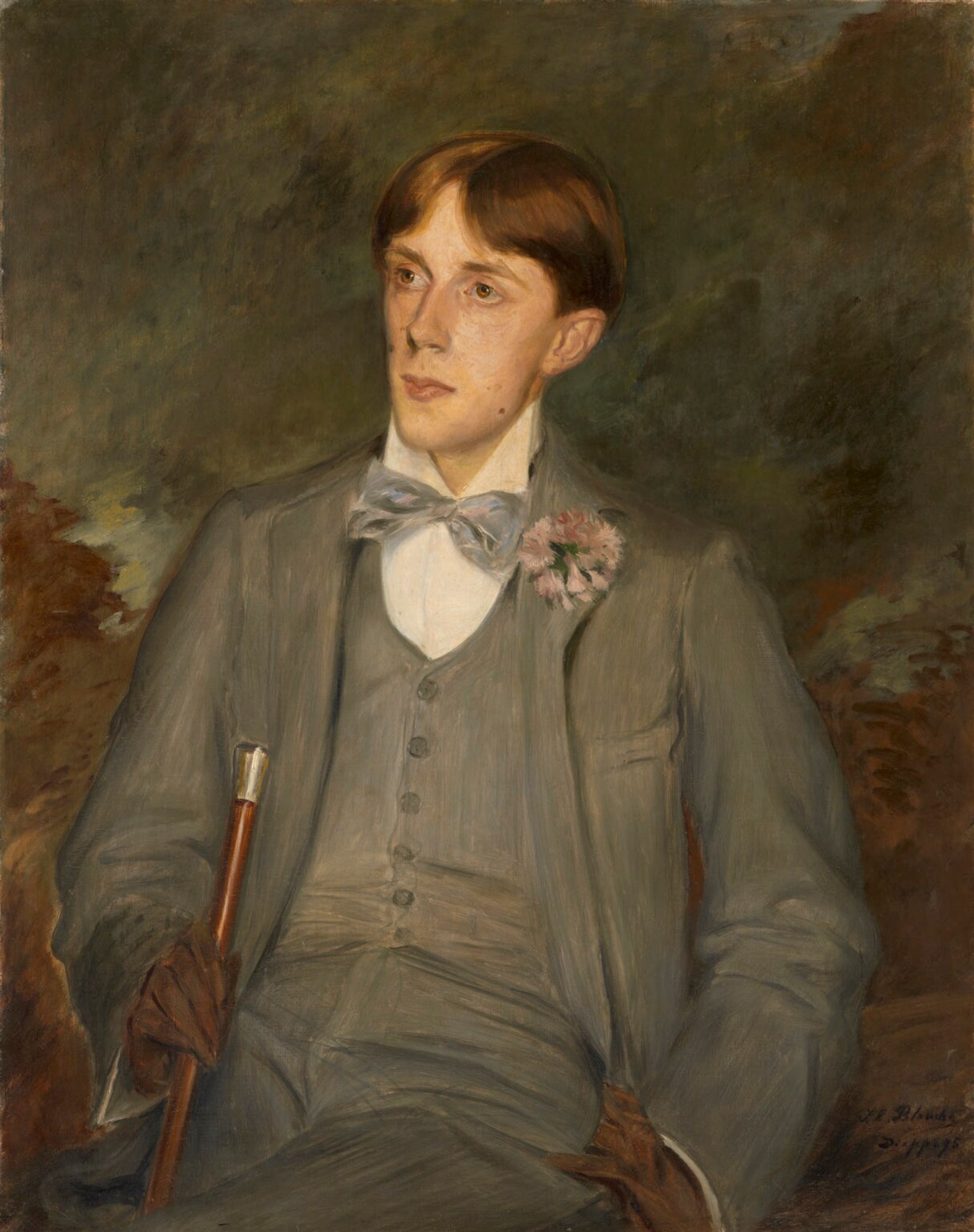
Aubrey Vincent Beardsley was an English artist and illustrator, whose brief yet impactful career left an indelible mark on the art world. Born in Brighton, England, in 1872, Beardsley's work was instrumental in the development of the Art Nouveau movement, and he is often remembered for his bold, innovative illustrations that challenged Victorian sensibilities with their erotic and often grotesque imagery.
Beardsley's artistic journey was characterized by his unique ability to blend influences from Japanese woodcuts with the aesthetic of the English Art Nouveau movement. His illustrations are distinguished by their stark contrasts of black and white, intricate details, and the absence of middle tones, creating a dramatic and unmistakable style. He was particularly known for his illustrations for the limited edition of "Le Morte D'Arthur," which were celebrated for their elaborate detail and pre-Raphaelite influences, despite their sometimes grotesque details. This work, along with his contributions to "The Yellow Book" and illustrations for Oscar Wilde's "Salome," showcased his talent for capturing the decadent and the macabre, earning him both acclaim and controversy (Wikipedia, The Collector).
Beardsley's career, though short-lived due to his untimely death at the age of 25 from tuberculosis, was marked by significant contributions to various publications, including "The Studio" and "The Savoy," which he co-founded. His work for "The Yellow Book," where he served as art editor, was particularly influential. The magazine, using the latest image-reproduction technology of the time, allowed Beardsley to make dramatic use of black and white space, reflecting his vision of modern life and aesthetics (V&A Museum).
Despite facing health challenges and controversies, including being dismissed from "The Yellow Book" during the scandal surrounding Oscar Wilde's arrest, Beardsley continued to work on projects that pushed the boundaries of conventional morality and art. His illustrations for works like Aristophanes' "Lysistrata" and his retelling of the Tannhäuser legend are testament to his enduring creative spirit and his willingness to explore themes of decadence, sexuality, and the grotesque.
Beardsley's legacy extends beyond his death, influencing not only the Art Nouveau movement but also future generations of artists and illustrators. His work continues to be celebrated for its daring originality and its challenge to the norms of his time. The Victoria and Albert Museum, among others, has celebrated Beardsley's contributions to art and culture, showcasing his ability to intertwine the beautiful and the grotesque in ways that remain provocative and engaging to this day.
For collectors and experts in art and antiques, Beardsley's work offers a fascinating glimpse into the aesthetic and cultural shifts of the late 19th century. His influence on poster art, illustration, and the broader Art Nouveau movement underlines the significant impact he had during his brief career. To stay updated on sales and auction events related to Aubrey Vincent Beardsley's work, signing up for updates can provide exclusive access to the continuing legacy of this remarkable artist.
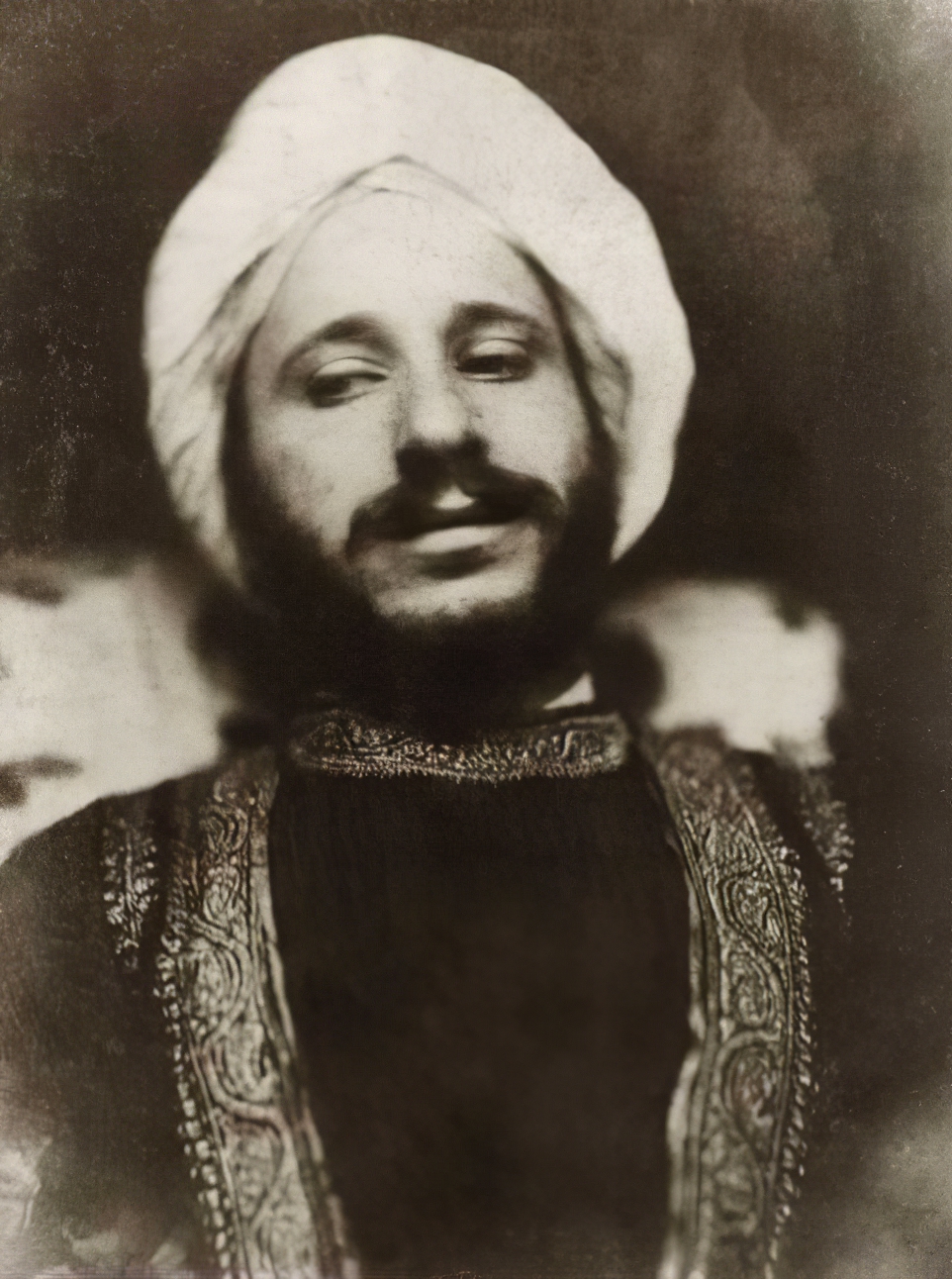
Simeon Solomon was a British painter associated with the Pre-Raphaelites who was noted for his depictions of Jewish life and same-sex desire. His career was cut short as a result of public scandal following his arrests and convictions for attempted sodomy in 1873 and 1874.
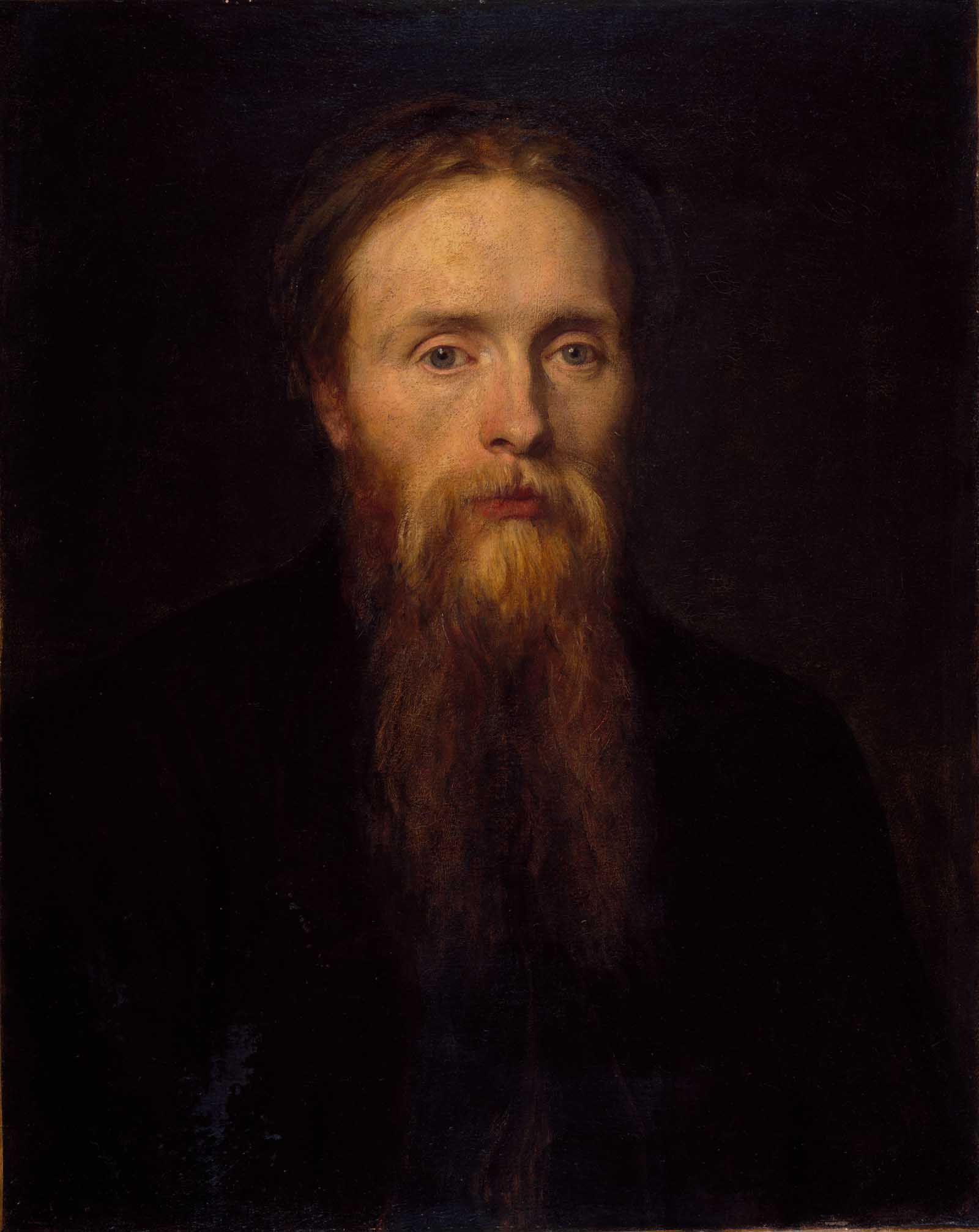
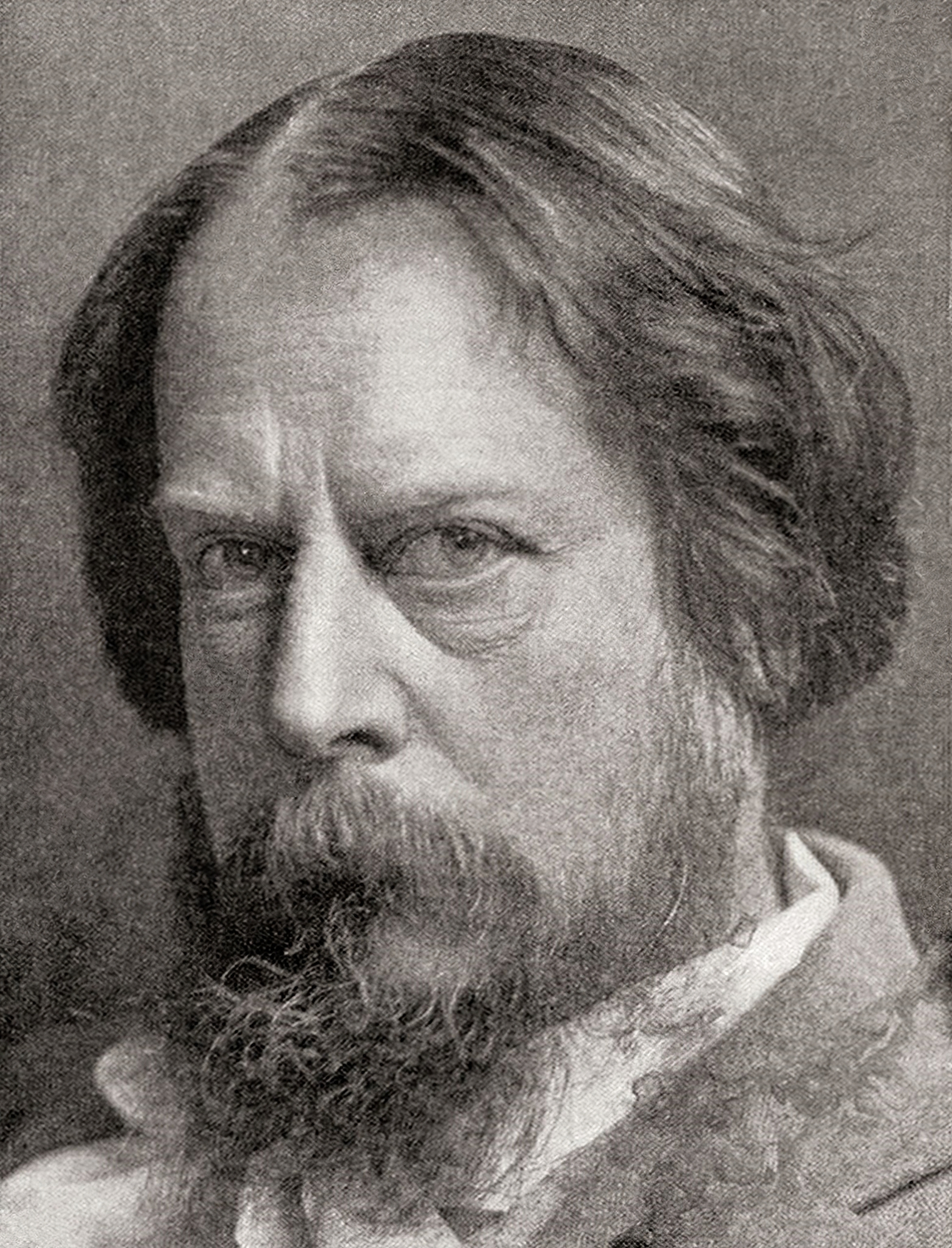
William Blake Richmond was a British painter, sculptor and a designer of stained glass and mosaic. He is best known for his portrait work and decorative mosaics in St Paul's Cathedral in London.
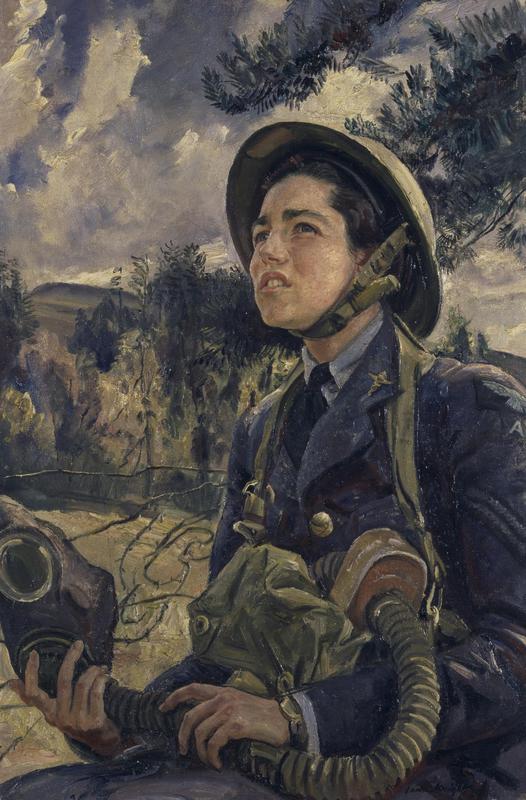
Dame Laura Knight was an English artist who worked in oils, watercolours, etching, engraving and drypoint. Knight was a painter in the figurative, realist tradition, who embraced English Impressionism. In her long career, Knight was among the most successful and popular painters in Britain. Her success in the male-dominated British art establishment paved the way for greater status and recognition for women artists.
In 1929 she was created a Dame, and in 1936 became the second woman elected to full membership of the Royal Academy. Her large retrospective exhibition at the Royal Academy in 1965 was the first for a woman. Knight was known for painting amidst the world of the theatre and ballet in London, and for being a war artist during the Second World War. She was also greatly interested in, and inspired by, marginalised communities and individuals, including Romani people and circus performers.
